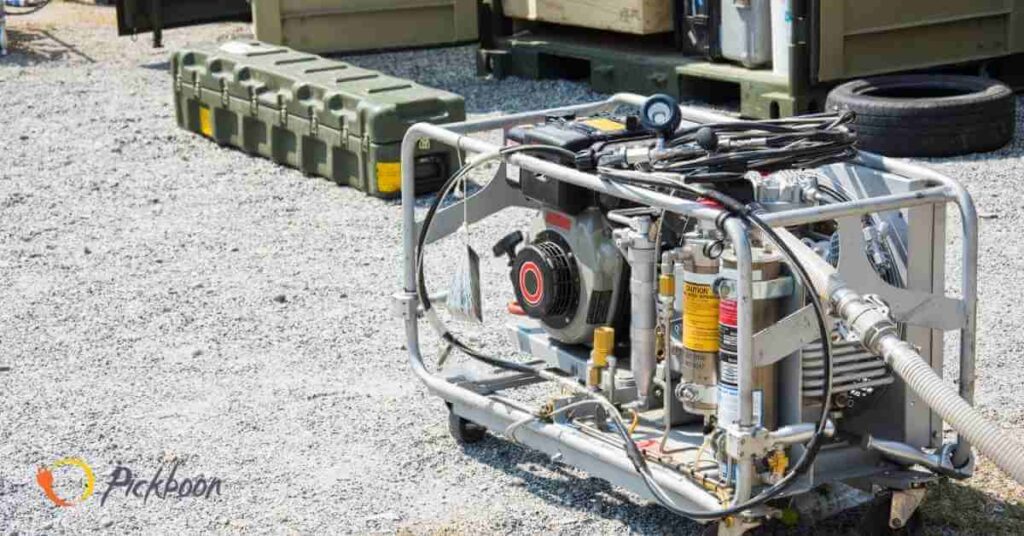Do you have issues with power, such as light flickering?
Is it an issue to have continual power fluctuations and power surges? This indicates that your generator may be supplying dirty electricity. You are going to have an amazing guideline on how to clean up generator power for electronics.
These days, every home has a generator to offer backup power in the event of an emergency. However, an updated version may not be available in every home. Upgraded generators are now available on the market, thanks to advances in technology.
These generators provide more than simply raw power. In reality, certain generators can produce filthy electricity. You must therefore learn how to clean generator power. They would be a reliable source of power, according to the latest claim.
You can live worry-free with a few extra dollars. However, not everyone will be willing to invest in the new ones. Those who already have a perfectly excellent conventional generator at home, in particular.

Table of Contents
What Does It Mean By Dirty Power?
The key to receiving clean and consistent electricity from a generator is to understand how the generator generates alternating currents. The quality of the generator’s internal inverter and voltage regulating mechanism is often the most important factors. When searching for the best solar power bank, consider how it can complement your generator setup for reliable power.
Unreliable or fluctuating electricity is referred to as dirty power. Since most fluctuations or harmonic distortions have been eliminated from mains electricity, you may scarcely ever detect dirty power.
Some generators, on the other hand, may not deliver the same level of electricity as the power company.
While dirty electricity is usually associated with low-quality generators, dirty power may also come from a high-quality generator. This is especially true if your generator isn’t serviced regularly.
Which generators are safe to use with electronics?
The majority of people picture wheeling a generator outdoors, putting extension cables inside the home, and turning it on. If this is what you’re looking for, there are plenty of well-known brands as well as a slew of low-cost Chinese generators of variable quality.
When it comes to powering sensitive devices, it’s vital to understand the difference between a portable and a permanently placed backup generator.
Individuals in Minneapolis and St. Paul who have utilized portable generators have reported that the “unclean” power that has flowed through has harmed their delicate devices. Portable generators are more prone to surges.
Manufacturers of standby generators, on the other hand, have taken precautions to reduce the risk of surges and ensure that the electricity delivered is as clean as possible.
Sensitive devices like televisions and laptops, many portable generators aren’t completely safe to operate. When the generator runs out of gas and stutters, the power might be unequal, and surges and voltage swings can damage delicate circuits.
Inverter generators are safe for electronics, but they are much more expensive than a standard portable generator.
Let’s know how to clean up generator power for electronics
Due to voltage spikes, some generators that produce unequal power can damage sensitive circuits, especially when the generator runs out of gas.
How to Protect Electronics When Using a Generator
Many of the electronic gadgets we use today have microprocessors and microchip components that are only designed to handle specified voltages to execute a specific purpose.
A Protector Against Surges
Even when using the main power supply rather than a generator, most individuals should utilize surge protector strips for all gadgets. When used appropriately, a surge protector detects the excessive voltage and sends it to a grounding wire.
To operate effectively, your surge protector must be connected to an outlet with a grounding pin; many individuals don’t plug surge protectors incorrectly, and as a result, they don’t get the protection they anticipate.
Choose a high-quality surge protector, change it frequently, and don’t rely on it as your primary way of safeguarding your electronics while utilizing a generator.
Replace the Oil
Regular oil changes are one of the most critical aspects of generator maintenance.
Based on the following considerations, industry experts recommend changing the oil every 70 to 180 hours of operation. For example, because newer, state-of-the-art models burn cleaner than older ones, they may require fewer oil changes.
However, if your generator is used in an area where there is a lot of dust or pollutants that might mix with the oil, you may need to increase the number of times you replace the oil.
Choose The Perfect One
Every electrical product has a data plate with information on how much power it uses. The watts stated on most power tools are all they need to run.
Central heating pumps, lighting, televisions, video recorders, and other household appliances are included in this category.
Items such as freezers, refrigerators, washing machines, and some lawnmowers are often different; while they may show a wattage rating, the sort of motor they utilize might need a considerably higher wattage demand when first turned on, then a much lower wattage required once turned on.
Use New Gas Instead of Old Gas
Most homeowners are unaware that they should empty their generator’s fuel tank after each usage. Cleaning out the tank guarantees that you’re using clean, efficient gasoline while also preventing erosion and damage to your equipment.
Generator Mode on a UPS
The electricity from a generator is recognized and compensated for by UPS systems. The Double-Conversion UPS serves the same purpose as an inverter generator. It converts AC power into DC and back again to AC. This produces steady, clean, consistent energy that is safe for electronics.
Surge Arrester should be added to the mix
Surge arresters may not be able to absorb and deflect the whole strength of a power surge, especially in the event of lightning, but they may divert 80-95 percent of it, leaving the rest to plugged-in surge protectors.
An electrician is skilled in installing a surge arrester (also known as a “whole-house surge arrester”) at the home’s service panel.
To safeguard modems, televisions, and other equipment linked to phone and/or cable lines, it’s a good idea to install separate, smaller surge arresters.
Check the fuel level in your portable generator on a regular basis
You probably only use your portable generator a handful of times a year, if at all! Meanwhile, don’t make the error of leaving old gasoline in the generator’s fuel tank.
To avoid stale gasoline, add a fuel stabilizer or drain any gas left over at least once per year.
Additionally, although most oil brands in your generator last for five years, it is not clear how long it takes for the gas to go stale. So don’t risk clogging your generator motor.
FAQ
Every electrical product has a data plate with information on how much power it uses. The watts stated on most power tools are all they need to run. Some lawn mowers, freezers, refrigerators, washing machines, and other household appliances are often different.
There are two types: long-run and regular-run generators. Most long-run generators can operate all night on a normal tank that lasts for some hours. We propose a long-run tank machine if you need a backup generator (for when there is a power outage). Most long-run generators can operate all night on a normal tank that lasts for some hours. We propose a long-run tank machine if you need a backup generator (for when there is a power outage).
Any kind of optimum Volt sockets will perform well.
Each type of fuel has its own set of advantages and disadvantages. Gasoline is inexpensive and easy to obtain, but it is very flammable, so keeping a large amount on hand may be hazardous, and it also doesn’t last very long if left unused. Diesel is the least volatile, although it has a shorter shelf life than gasoline and will go bad within two years.
If you are planning to use your generator during a power cut, it is a good idea to check it is in good condition every six months.
The Bottom Line
We wrapped the every initial needed for how to clean up generator power for electronics.
Inverter generators give a steady, consistent, and predictable source of electricity (clean energy). The key to keeping your devices safe is to avoid power surges, which can be caused by non-inverter generators.
Before you use your generator, make sure it is in good working order and that it is not overloaded. You definitely should know how to clean dirty power from a generator and keep it always safe and clean to use.
You should also ensure that it has enough electricity to power all of your appliances in case of a big fire during the winter months’ cold snap.
Like any other equipment in your house, maintaining your generator helps to prevent it from breaking down or requiring premature repairs. The more you pay attention to your generator, the longer it will survive and perform better.
We’ve compiled a list of all probable ways on how to clean up generator power for electronics. Your top concern should be to secure all of your appliances and important gadgets. Dirty electricity may be quite harmful, therefore finding a rapid remedy is crucial.
Experimenting is the key to discovering the best answer to your situation. You may experiment with several options until the one that you love best suits you is found.
